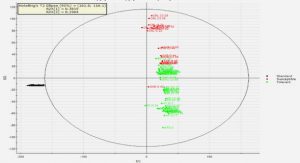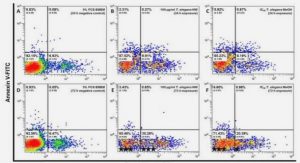Get Complete Project Material File(s) Now! »
Sample populations
The data for the property industry survey was obtained through a questionnaire administered to 748 delegates who attended the 38th SAPOA International Convention and Property Exhibition held at the International Convention Centre in Durban from 17 to 19 May 2006; and 29 first and second year students who enrolled for the Master of Science in Real Estate Degree for year 2006 at the University of Pretoria in South Africa. The delegates for the SAPOA conference included SAPOA members, and their mailing list was obtained from SAPOA Head Office in Sandton, Johannesburg. The total number of delegates and students polled was 777.
Justification for using SAPOA members and delegates in the property survey was that SAPOA is recognised as the main representative body and official voice of the leading and large property investment organisations in South Africa from the private sector for the property industry, with a combined property portfolio in excess of R150 billion. Its members control almost 90% of all commercial and industrial property in South Africa. The association is held in high esteem by relevant sectors of government and is consulted on most issues pertaining to the property industry. Its members include: property owners and developers; property managers; property investors; banks; insurance companies; pension funds; academics; property consultants; researchers; lawyers; contractors; government; and many other professionals. As it can be noted its members come from different sectors of the property industry. This benefited the investigation in the sense that practitioners from different real estate fields were given the opportunity to comment on topics in Masters Real Estate curriculum and offer suggestions on areas of curriculum development for the curriculum to remain relevant and meet industrial requirements. SAPOA members also come from different geographical regions of South Africa. This gave an added advantage to the study by collecting comments on the curriculum from real estate practitioners based in different parts of South Africa.
MSc Real Estate students at the University of Pretoria were included in the property survey because, just like employers and practitioners, they were in a better position to assist academicians in curriculum improvement and development for at least two reasons (Manning, 2002). First, most MSc students already had substantial work experience.
Therefore, they were aware of what the industry was looking for. Second, many students investigate the knowledge and the skills they require in a workplace. As a result, student participation in the survey enriched the data collected by allowing students, who are the products of the curriculum, to offer comments on the curriculum with regard to what they were expecting to learn.
MSc (Real Estate) degree programme offered by University of Pretoria
The course is developed and implemented by the Department of Construction Economics which is part of the School for the Built Environment in the Faculty of Engineering, Built Environment and Information Technology. The MSc (Real Estate) degree programme at the University of Pretoria is intended for graduates such as quantity surveyors, construction managers, architects, engineers and other professionals from the built environment who contemplate furthering their academic qualifications in the property industry. Tuition is arranged in block weeks to enable students from centres outside Pretoria to follow the course. For student admission purposes, a previous five-year Bachelor‟s or a present Honour‟s degree in Quantity Surveying or Construction Management or another acceptable four-year degree, as well as appropriate practical experience, deemed sufficient, is required. In order to supplement knowledge of the built environment, it may be required of students who do not possess a degree in Quantity Surveying or Construction Management to pass additional admission course subjects during the first year of study of their MSc degree course. Students may, alternatively, enrol for these only in the year prior to enrolling for MSc.
Table 4.1 contains recommended course subjects for a student to follow in order to meet the completion requirements for the degree. The degree is obtained by following prescribed coursework in property development, property management, property valuation and related subjects; and submitting a treatise. The minimum study period is two years. A sub-minimum of 40 percent for semester and year marks is required for admission to examinations on any subject. A minimum final mark of 50 percent is required for a student to obtain a pass in any subject. 50 percent is also a minimum requirement to pass the treatise. In order to be considered for the award of the degree, a student should have obtained 170 credits for course subjects and, in addition, have submitted and passed a treatise (60 credits), i.e. a total of 230 credits.
CHAPTER 1: THE PROBLEM AND ITS SETTING
1.1 Introduction
1.2 The statement of the problem
1.3 The sub-problems
1.4 The hypotheses
1.5 The assumptions
1.6 The delimitations
1.7 Definitions of terms
1.8 Abbreviations
1.9 The importance of study
CHAPTER 2: LITERATURE REVIEW
2.1 Introduction
2.2 Real estate discipline
2.3 Critical issues of real estate education
2.4 Influential elements of real estate curriculum development
2.5 Summary and application
CHAPTER 3: RESEARCH METHODOLOGY
3.1 Research method
3.2 Postgraduate real estate curriculum survey
3.3 Property industry survey
CHAPTER 4: CURRICULUM SURVEY
4.1 Introduction
4.2 Selected postgraduate real estate curricula
4.3 Results and analysis
4.4 Conclusions of the curriculum survey
CHAPTER 5: PROPERTY INDUSTRY SURVEY
5.1 Introduction
5.2 Survey approach
5.3 General survey procedure
5.4 Results and analysis
5.5 Conclusions of the property industry survey
CHAPTER 6: MODEL CURRICULUM
6.1 Introduction
6.2 Critical factors considered in the development of the model curriculum
6.3 Constituents of the real estate industry in South Africa
6.4 Conventional real estate knowledge and skills
6.5 Curriculum
CHAPTER 7: CONCLUSIONS, RECOMMENDATIONS AND SUMMARY
7.1 Introduction
7.2 Key research findings of the study
7.3 Conclusions of the study
7.4 Recommendations of the study
7.5 Further research
7.6 Contributions to knowledge
7.7 Summary
BIBLIOGRAPHY






